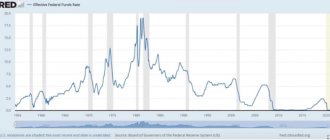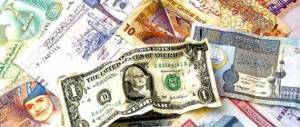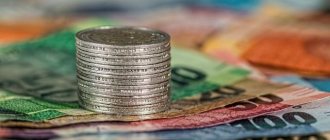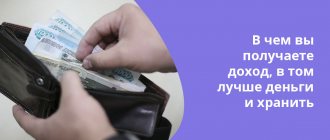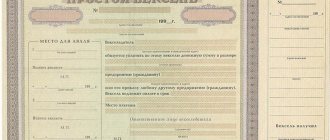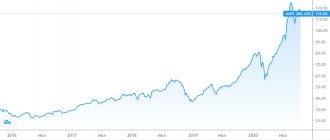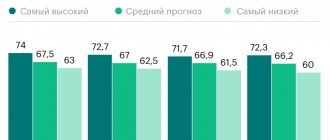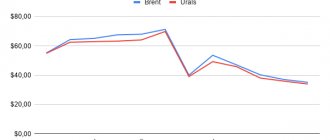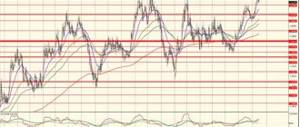Today, dollar jumps have become a fairly common problem for us. Do you think the crisis dictates its terms or the Fed? The crisis component undoubtedly plays a role, but increasingly, observations show that it is the publication of the minutes of the US Federal Open Market Committee that does something incredible to the dollar. At this moment, one can observe a sharp and seemingly unpredictable change in the exchange rate of currencies and, first of all, the US dollar. Surprised? As statistics from the Bank for International Settlements show, the dollar is used in over 87% of all foreign exchange transactions. As a result, the publication of FOMC flows affects its “jumps” and comes under close monitoring of all those associated with the market.
More details
The Federal Reserve System (FRS) is actually an independent agency of the United States of America that deals with finance, is the central bank and controls the entire US banking system. The start of such a huge enterprise was given back in 1913. Today, the US Federal Reserve consists of 12 reserve federal banks in large American states and a council of 7 members, who are elected by the President of the United States after approval by Congress. The US Federal Reserve System consists of 12 large federal banks, which are united by the Federal Open Market Committee (FOMC). It is the publication of FOMC minutes that is an important event for a trader. The fate of the dollar and many fans of stock trading is decided by 12 committee members. Of these, 4 are managers of the Federal Reserve Bank and 7 people of the Federal Reserve. The Committee meets 4 times a year, but most often such meetings are held every 5 or 7 weeks, after which minutes of the meeting are published within 3 weeks. Such a protocol contains the actual results of voting on a particular issue, the specifics of which can be completely different, and the final result should lead to stabilization of the economy.
US Federal Reserve (Federal Reserve System)
The US Federal Reserve System is an analogue of central banks and was created in 1913. It appeared in its modern form after many additions and changes in 1935. The type of ownership is joint stock, but, nevertheless, it has a certain status, but the state plays the main role in decisions.
The basis of the Federal Reserve is the board of governors, which includes seven representatives. They are appointed directly by the President of the United States, as is the Chairman. After this, their nominations are submitted to the Senate, which must approve them. The chairman is elected for a term of four years, and members for a full term of 14 years.
New items for 2016
In fact, until 2015, the Federal Reserve acted on the principle of lowering or raising interest rates based on the unemployment rate in the country. This orientation changed in 2015, when the inflation rate reached the target level and became the first and main component that forced the interest rate to change. Thus, for the first time in 10 years, the US Federal Reserve raises interest rates by a quarter of a percent. Experts call this turn of events predictable, because the economy is growing steadily, which gives committee members complete freedom of action and the logical right to increase the interest rate.
Caution, Fed Minutes
All these changes must be understood by those who directly depend on them, that is, traders. Since mid-2014, the dollar/euro exchange rate has been quite stable and reliable. Fundamentals in the United States were only positive, which was difficult to say in the European Union area. The trend remained stable, which allowed every trader to be confident in the future, but a single statement by Fed members provoked a sharp change in the exchange rate and caused the formation of new trends. What could have changed the situation so much? There is no secret. During this period, Fed members simply stated that a “strong dollar” was not a positive situation in the economy and in the foreign exchange market, in particular. This phrase completely reversed the dollar, which created different situations for individual traders. The currency remained in this state until the next meeting of the Federal Open Market Committee and the publication of its next minutes, which stated that the interest rate would not increase in the near future. It was then that the dollar returned to its previous form, and the most popular currency pair on the market moved in the opposite direction from the trend.
As practice shows, any publication of the FOMC protocol can create such a situation. Therefore, experienced traders simply close positions before publications or news that the US Federal Reserve provides to the public and open them again after, in order to avoid sharp “jumps” in the currency in both directions.
FOMC Statement - Full Text
The Federal Reserve is committed to using the full range of its tools to support the U.S. economy during these challenging times, thereby furthering its maximum employment and price stability goals.
The COVID-19 pandemic is causing enormous economic hardship in the United States and around the world. The pace of recovery in economic activity and employment has slowed in recent months, with weakness concentrated in sectors hit hardest by the pandemic. Weaker demand and an earlier decline in oil prices are keeping consumer price inflation in check. Overall financial conditions remain supportive, reflecting in part policy measures to support the economy and the flow of credit to American households and businesses.
The path of the economy will largely depend on the course of the virus, including progress in vaccinations. The ongoing public health crisis continues to weigh on economic activity, employment and inflation and poses significant risks to the economic outlook.
The committee aims to achieve maximum employment and inflation of 2 percent over the long term. With inflation consistently below this long-term target, the committee will seek to achieve inflation moderately above 2 percent for some time, so that inflation averages 2 percent over time and long-term inflation expectations remain well anchored at 2 percent. The Committee expects to maintain an accommodative monetary policy stance until these results are achieved. The Committee has decided to maintain the target range for the federal funds rate at 0 to 1/4 percent and expects that it will be appropriate to maintain this target range until labor market conditions reach levels consistent with the Committee's estimates of Maximum Employment. and inflation will not rise to 2 percent and will not moderately exceed 2 percent for some time. In addition, the Federal Reserve will continue to increase its holdings of Treasury securities by at least $80 billion per month and agency mortgage-backed securities by at least $40 billion per month until significant further progress is made in achieving the Committee's objectives to ensure maximum employment and price stability. These asset purchases contribute to the smooth functioning of the market and favorable financial conditions, thereby maintaining the flow of credit to households and businesses.
In assessing the appropriate monetary policy stance, the Committee will continue to monitor the implications of emerging information for the economic outlook. The Committee will be prepared to adjust its monetary policy stance accordingly if risks arise that may impede the achievement of the Committee's objectives. The committee's assessments will take into account a wide range of information, including public health data, labor market conditions, inflation pressures and inflation expectations, and financial and international developments.
Voting in favor of the monetary policy decision were Jerome H. Powell, Chairman; John C. Williams, vice-chairman; Thomas I. Barkin; Raphael W. Bostic; Michelle W. Bowman; Lal Brainard; Richard H. Clarida; Mary K. Daley; Charles L. Evans; Randal K. Quarles; and Christopher J. Waller. source
Overview of currency pairs
EUR/USD
The euro fell against the dollar on Wednesday after a European Central Bank official said the ECB was keeping a close eye on the single currency, while the dollar rose ahead of a Federal Reserve meeting. ECB Governing Council member Klaas Noth said the central bank has the option to cut deposit rates further if necessary to improve funding conditions and reach its inflation target. Noth's comment was the clearest hint to date from an ECB policymaker about the possibility of a rate cut to stem the euro's rally.
The euro was down 0.48% on the day at $1.2101. Resistance can be seen at 1.2094(38.2%fib), breakout upside could propel the pair towards 1.2142(50%fib). On the other hand, support is seen at 1.2053(daily low), breakout below could take the pair towards 1.2000(psychological level).
GBP/USD
Sterling rose against the dollar on Wednesday ahead of comments from Federal Reserve Chairman Jerome Powell, while Britain's COVID-19 vaccine also supported the pound. Expectations of a large fiscal stimulus package have fueled risk-on sentiment in markets in recent weeks, benefiting sterling, and market participants are expecting Powell to renew his commitment to ultra-easy policy. Britain's successful initial vaccine rollout also helped the pound, although the death toll from the coronavirus pandemic topped 100,000 on Tuesday.
Sterling was up 0.01% against the dollar at $1.3708 at 1240 GMT, not far from the May 2018 high of $1.3759 hit earlier. Resistance can be seen at 1.3758 (23.6% Fibonacci), a break up could trigger growth towards 1.3800 (psychological level). On the other hand, support is visible at 1.3687 (5DMA), a break below could take the pair to 1.3640 (38.2 %fib).
USD/CAD
The Canadian dollar fell to its lowest level in more than two weeks against its stronger U.S. counterpart on Wednesday as rising coronavirus cases weighed on investor sentiment and ahead of the Federal Reserve's interest rate decision.
The Canadian dollar traded 0.8% lower at 1.2785 against the greenback, its weakest level since January. 11 at 1.2822. Global coronavirus cases have topped 100 million as infections rise in Europe and the Americas and the Asia-Pacific region struggles to contain new outbreaks as governments rush to procure adequate supplies of vaccines. Resistance can be seen at 1.2821 (38.2% fib), a break upward could trigger a rise to 1.2868 (23.6% fib). Support is visible at 1.2775 (50% fib), a break below could take the pair to 1.2730 (61.8% fib).
USD/JPY
The dollar strengthened against the Japanese yen on Wednesday as investors became more cautious due to concerns about the economic fallout from COVID-19 and after the US Federal Reserve raised concerns about the pace of the economic recovery. The Federal Reserve kept its key overnight interest rate near zero and left its monthly bond purchases unchanged, again pledging to keep those economic fundamentals in place until there is a full rebound from the pandemic-fueled recession. That did not happen, and the Fed noted a potential slowdown in the pace of recovery in its policy statement.
Strong resistance can be seen at 104.20 (day high), a break higher could push the pair towards 104.44 (23.6% fib). On the other hand, support is seen at 104.08 (38.2% fib), a break below could take the pair towards 103.77 ( 50% fib).
